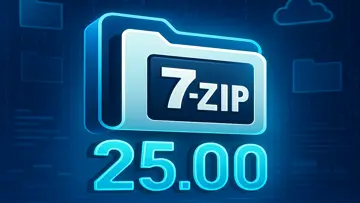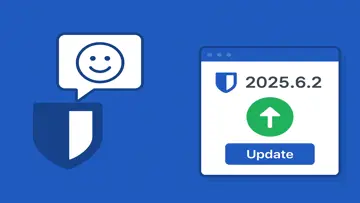5.1 Safe to install
The Elberfeld Bible is a significant German Bible translation that was first published in 1855 (New Testament) and 1871 (Old Testament). While it has never achieved the same level of popularity as the Luther Bible, it has gained many supporters over time because of its close translation and faithfulness to the text. The priority in this translation lies in its literalness rather than linguistic beauty. As a result, it has become a model for many subsequent translations.
The name "Elberfelder" became established due to a large portion of the translation work taking place in Elberfeld (now a district of Wuppertal). The initiators of the translation were Julius Anton von Poseck, Carl Brockhaus, and John Nelson Darby. Initially, it was closely associated with the Brethren Movement.
Text Basis
The Elberfelder translation was one of the first German Bible translations to depart from the Textus Receptus in the New Testament and reflect new insights of textual criticism. The translations incorporated manuscript discoveries and publications from the 19th century, such as the Codex Sinaiticus and Codex Vaticanus. The current editions of Elberfelder Bible use the text-critical edition by Nestle-Aland (Novum Testamentum Graece) for the New Testament, while the Old Testament is based on the Masoretic Text.
Differences from other translations
The Elberfelder Bible is an original-text-oriented Bible translation. Its goal is to present the original text of the biblical writings as faithfully and with as little theological interpretation as possible. Due to its proximity to the languages of the original texts (Hebrew, Aramaic, and Greek), it may lack some linguistic fluidity, leading to linguistic harshness in earlier editions. Since revisions starting in 1960, the translators have aimed for better readability without sacrificing the goal of text fidelity.
The Elberfelder Bible is still regarded as the German translation that comes closest to the original text, alongside the Concordant New Testament and some translations primarily intended for study aids, such as those by Fridolin Stier or the Munich New Testament. The aim of the translation was and still is to provide the "ignorant of the original text ... with a faithful and accurate representation of the Word of God in their own language at minimal cost" (from the preface of the first edition). Words that have been added for better understanding but are not in the original text are marked in the Elberfelder Bible. Additionally, footnotes are provided with alternative readings and explanations for better comprehension. Until the revision in 1960 and onwards, section headings were not included since they are also absent in the original texts.
Overview
Die Elberfelder Bibel Audio is a Freeware software in the category Education developed by Oleg Shukalovich.
The latest version of Die Elberfelder Bibel Audio is 5.1, released on 02/01/2024. It was initially added to our database on 02/01/2024.
Die Elberfelder Bibel Audio runs on the following operating systems: iOS.
Users of Die Elberfelder Bibel Audio gave it a rating of 5 out of 5 stars.
Pros
- High-quality audio recordings make it easy to engage with the text while listening.
- Includes modern language that can appeal to contemporary audiences.
- Provides a convenient way to experience the Bible on the go, suitable for multitasking.
- Features clear and articulate narration, enhancing comprehension and retention.
- Accessible for people with visual impairments or reading difficulties.
Cons
- Limited to the Elberfelder translation, which may not suit all users' preferences.
- May lack additional commentary or study materials that some users look for in a Bible app.
- Audio format may not be suitable for those who prefer reading text over listening.
- Requires a compatible device or app to play the audio files, which may limit accessibility.
- Potentially limited audience due to language considerations, as it's primarily in German.
Related
Christmas Carols - The Most Beautiful Christmas Songs to Hear & Sing
Experience the festive spirit with "The Most Beautiful Christmas Carols," now available on the app store for the first time.Daily Psalms Bible Verses
The Daily Holy Bible Verses app provides users with a daily dose of inspirational quotes from the Bible. Each morning, a Bible verse for encouragement and inspiration is delivered to you.Deutsche Bücher
Are you looking for German books? Then this app is perfect for you! Discover 10,517 German literary works, including: 249 novels 1,107 short stories & novellas 8,081 poems & other lyrical works 96 philosophical works 47 diaries …German Bible Audio Pro Luther
This application provides a comprehensive digital version of the Holy Bible in German, featuring both text and audio components.German Dictionary +
A bilingual dictionary app providing translation between English and German languages. It offers offline access with over 350,000 words and phrases.German-English Luther Holy Bible Audio Book
The "Holy Bible in German and English" app offers a unique opportunity to engage with the Bible in both languages side by side. Users can delve into the scriptures through the contrasting texts available.Latest Reviews
|
Transfuser
Unlock Your Creative Potential with Transfuser |
|
|
JL Sussex Advent Calendar
Unwrap Daily Surprises with the JL Sussex Advent Calendar |
|
|
|
Koodo Reader
Koodo Reader: A Comprehensive Tool for Digital Reading |
|
|
StarPlayerAgent
Enhance your multimedia experience with StarPlayerAgent! |
|
PowerColor DevilZone
PowerColor DevilZone: A Graphics Card for the Bold |
|
|
|
Open Visual Traceroute
Visualize Your Network with Open Visual Traceroute |
|
|
UpdateStar Premium Edition
Keeping Your Software Updated Has Never Been Easier with UpdateStar Premium Edition! |
|
|
Microsoft Edge
A New Standard in Web Browsing |
|
|
Google Chrome
Fast and Versatile Web Browser |
|
|
Microsoft Visual C++ 2015 Redistributable Package
Boost your system performance with Microsoft Visual C++ 2015 Redistributable Package! |
|
|
Microsoft Visual C++ 2010 Redistributable
Essential Component for Running Visual C++ Applications |
|
|
Microsoft OneDrive
Streamline Your File Management with Microsoft OneDrive |









